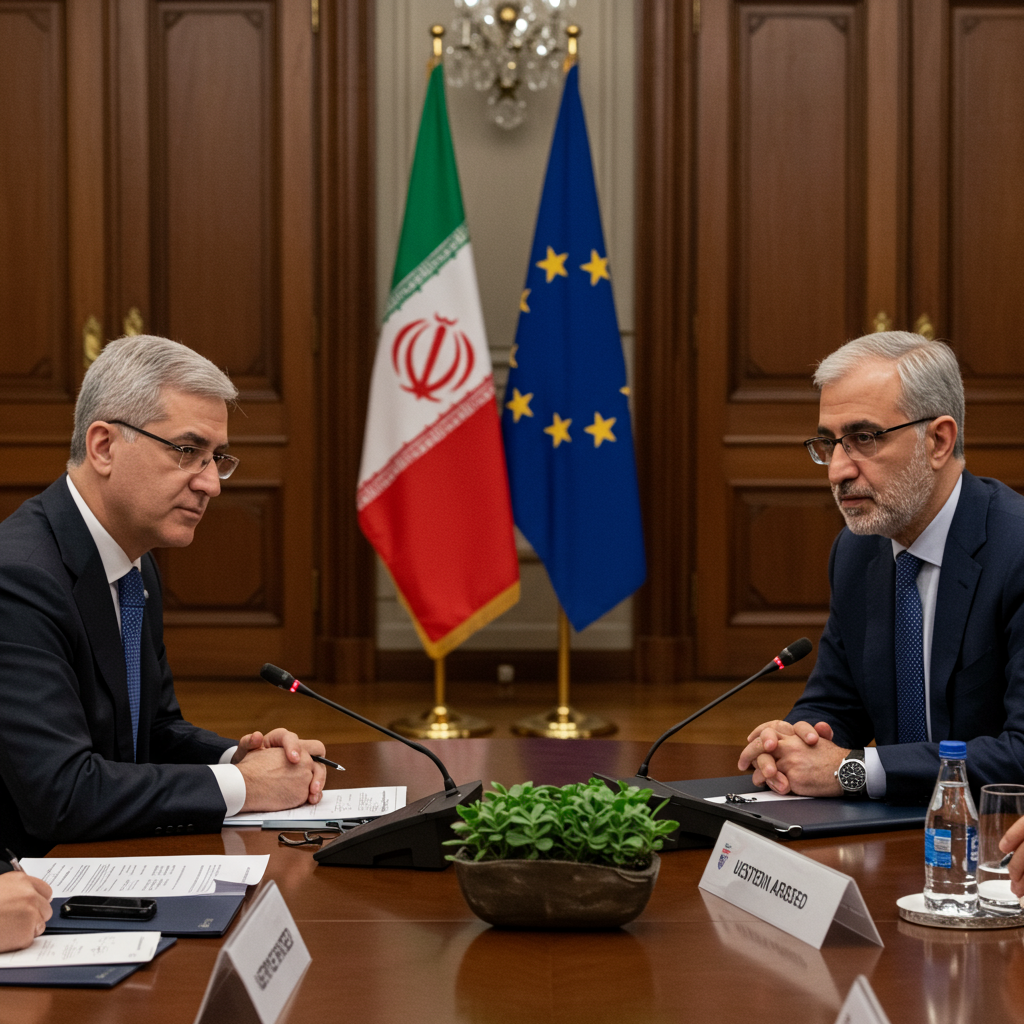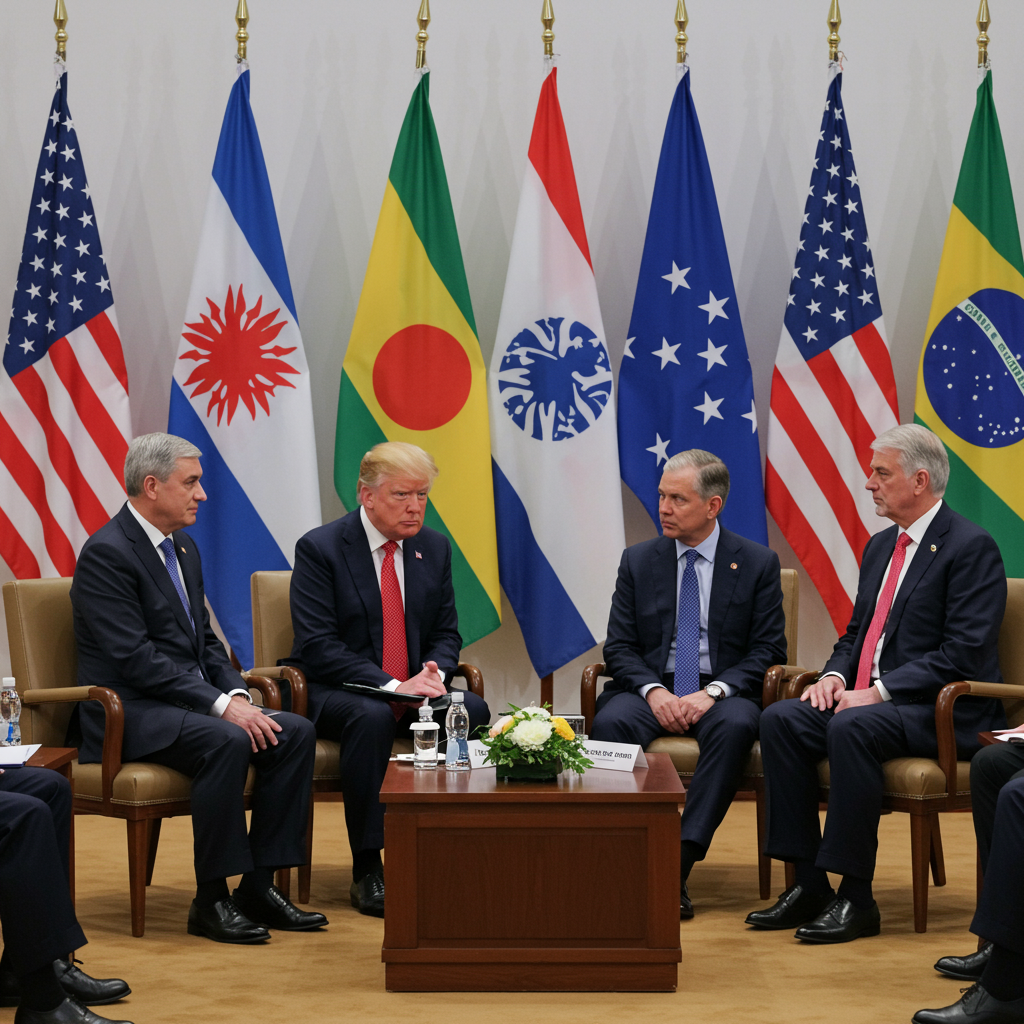High Stakes in the Middle East: Nuclear Fears Escalate to Calls for Regime Change
The long-simmering tensions surrounding Iran’s nuclear ambitions have exploded into direct military conflict, pushing the Middle East closer to a regional war. While Israel’s initial strikes were framed as preventing Iran from acquiring nuclear weapons, recent events, including a direct U.S. military intervention, have broadened the scope of the conflict, transforming the rationale into a broader confrontation with Tehran as a perceived “threat to the Western World” and fueling calls for the very downfall of the Islamic Republic’s government.
The situation reached a critical point on June 21, 2025, when the United States launched strikes against key Iranian nuclear facilities. This followed a period of intense debate within the U.S. administration and escalating military action by Israel against Iran.
Inside Iran’s Nuclear Program and the Fordow Challenge
Creating a nuclear weapon is a complex process, requiring access to uranium, its processing into gas, enrichment using centrifuges to a high purity (90%+ for weapons vs. ~5% for civilian use), and the technical expertise to assemble a device. Iran is a signatory to the Nuclear Non-Proliferation Treaty (NPT), which aims to prevent weapons proliferation through inspections.
However, the International Atomic Energy Agency (IAEA) has repeatedly raised alarms. Just hours before Israel began its initial wave of strikes, the IAEA passed a resolution citing Iran’s non-compliance with the NPT due to “undeclared nuclear material and activities at multiple undeclared locations.” IAEA Director-General Rafael Grossi stated that Iran was accumulating highly enriched uranium at “almost military levels” in quantities sufficient for “several nuclear weapons” and was not providing necessary clarity to inspectors.
Of particular concern is the Fordow enrichment facility, buried deep (up to 300 feet) under a mountain south of Tehran. This depth makes it immune to most conventional bombs. U.S. military planners believed it could potentially be destroyed by a series of strikes using the GBU-57 Massive Ordnance Penetrator (MOP) delivered by B-2 bombers – a capability unique to the U.S. military.
The U.S. Enters the Fray: Strikes on Nuclear Sites
After days of deliberation and escalating Israeli actions, President Donald Trump announced on June 21, 2025, that the U.S. had joined Israel in striking Iranian nuclear sites, including Fordow, Natanz, and Isfahan. Trump claimed the strikes had “obliterated” these facilities, destroying Iran’s nuclear enrichment capacity. U.S. officials, including Vice President J.D. Vance and Defense Secretary Pete Hegseth, characterized the mission as a “precision operation” specifically targeting the nuclear program, not seeking regime change. They stressed the U.S. remained open to negotiations, urging Tehran to return to talks.
The operation involved significant military assets, including 14 bunker-buster bombs, over two dozen Tomahawk missiles, and more than 125 aircraft, notably seven B-2 Spirit bombers that flew round trips from the U.S. mainland. U.S. officials claimed the element of surprise was maintained.
Conflicting Accounts and Uncertainty
Immediately following the strikes, conflicting reports emerged regarding their effectiveness. While U.S. officials cited initial assessments showing “extremely severe damage and destruction,” particularly at Fordow, Iranian state TV and officials claimed facilities were evacuated, damage was not irreversible, and crucially, much of the highly enriched uranium at Fordow had been moved prior to the attack. The IAEA also reported no evidence of enriched uranium at the Isfahan site, lending some support to the possibility of material relocation. A full damage assessment could take days.
The Dangerous Shift: From Nuclear Program to Regime Change
Even before the U.S. strike, the focus was broadening. While preventing a nuclear weapon remains the stated primary objective, the rhetoric from both Israeli and some U.S. officials has increasingly shifted towards open calls for the collapse of the Islamic Republic itself.
Following the Oct. 7, 2023, attacks by Iranian proxy Hamas, Israel intensified its campaign against Iran’s regional network. Seeing Iran weakened, Israeli officials like Defense Minister Israel Katz began openly stating that Iran’s leadership could “no longer be allowed to exist,” explicitly calling for the destruction of the Iranian government.
In the United States, Republican hawks have echoed this sentiment. Senators Steve Daines and Thom Tillis publicly advocated for the downfall of the Iranian regime, seeing it as a “reset” for the Middle East and urging President Trump to have “leeway to effect that.”
This push for “regime change,” however, faces significant opposition. The concept is unpopular with the American public, wary after decades of costly foreign interventions like the Iraq War, initiated under the pretext of non-existent WMDs. This wariness is shared by some within Trump’s administration, including Vice President J.D. Vance and Director of National Intelligence Tulsi Gabbard, creating an internal “civil war” between non-interventionists and hawks. Gabbard’s intelligence assessment that Iran was not building a weapon was reportedly dismissed by Trump and criticized by hawks. Despite this debate, the ultimate decision on military action rested solely with the President.
Escalation and Iran’s Response
The U.S. strikes immediately intensified the conflict. Hours later, Iran launched a new volley of ballistic missiles into Israel, injuring dozens. Iran strongly condemned the U.S. action as “outrageous,” “lawless,” and a “very big red line,” holding the U.S. “solely and fully responsible.” Tehran rejected immediate calls for negotiations, stating that diplomacy could only resume after Iran had responded to the aggression. Foreign Minister Abbas Araqchi warned of “everlasting consequences” and that Iran “reserves all options” for retaliation, while clarifying that Iran’s defense capabilities are “non-negotiable.”
The Uncertain Future
The strikes have thrown the future of Iran’s nuclear program and regional stability into deep uncertainty. Analysts suggest that military action, while causing setbacks, is unlikely to eradicate the program entirely, especially if material was moved.
A critical question now is whether the strikes will disincentivize or incentivize Iran to accelerate its efforts towards building a bomb. Some experts fear it could validate the path taken by countries like North Korea, which achieved nuclear weapons capabilities to deter such attacks. The possibility of Iran withdrawing from the NPT, which would remove international inspectors, looms large.
The international community reacted with alarm. The UN Secretary-General warned of the risk of the conflict rapidly getting “out of control.” While Israel celebrated the strikes as “bold” and “historic,” European leaders stressed the need for diplomatic solutions. Russia strongly condemned the U.S. actions as “irresponsible” and a “gross violation of international law,” with a former president even making a disturbing suggestion about potential nuclear supply to Iran. Arab states urged de-escalation. Canada called for calm and a return to negotiations while supporting the objective of preventing a nuclear Iran.
Despite the strikes, Iran retains formidable military capabilities, including a significant arsenal of short-range missiles and drones posing a threat to U.S. forces in the region. The Iranian regime faces a difficult choice on how to respond – needing to show strength domestically without triggering further devastating U.S. attacks. From Israel’s perspective, military officials indicate more objectives remain, raising the specter of a prolonged “war of attrition.”
Ultimately, the U.S. intervention, while ostensibly targeting nuclear capacity, has undeniably amplified the calls for and debate around fundamental regime change in Iran. As casualties mount on both sides and the region remains “highly volatile,” the path forward is fraught with danger, with no guarantee that military force will achieve the stated goals or prevent a nuclear-armed Iran. The decision now rests on whether the current coercive approach can force Iran back to the negotiating table on terms acceptable to the U.S. and Israel, or if it will instead push Tehran to accelerate its nuclear ambitions further underground, potentially abandoning the NPT altogether.




